#kashmiri pheran
Explore tagged Tumblr posts
Text
Unveiling Kashmir Box: A Haven of Authentic Kashmiri Products

Nestled in the serene valleys of Kashmir, a treasure trove of cultural richness and exquisite craftsmanship awaits exploration - Kashmir Box. As a brand synonymous with authenticity and quality, Kashmir Box offers a diverse range of traditional Kashmiri products, each embodying the essence of this enchanting region. From the iconic Kashmiri Pheran to the aromatic Kashmiri Kahwa, every item curated by Kashmir Box reflects the legacy of Kashmiri heritage and artistry.
Exploring the Kashmiri Pheran
At the heart of Kashmiri fashion lays the timeless elegance of the Kashmiri Pheran. Renowned for its intricate embroidery and comfortable design, the Pheran transcends mere clothing to become a symbol of Kashmiri identity. Kashmir Box proudly presents a stunning collection of pherans, meticulously crafted by skilled artisans using traditional techniques passed down through generations. Each Pheran tells a story of Kashmiri culture and craftsmanship, making it a cherished addition to any wardrobe.
Discovering the Kaftan Top
For those seeking a fusion of style and tradition, the Kaftan top emerges as a captivating choice. With its flowing silhouette and vibrant patterns, the Kaftan top captures the essence of Kashmiri fashion with a modern twist. Kashmir Box offers a captivating array of Kaftan tops, featuring exquisite embroidery and luxurious fabrics that epitomize the allure of Kashmiri attire. Whether worn casually or for special occasions, the Kaftan top adds an element of grace and sophistication to any ensemble.

Indulging in Embroidered Silk Suits and Sarees
Elevate your wardrobe with the opulence of embroidered silk suits and embroidered sarees from Kashmir Box. Imbued with timeless charm and exquisite detailing, these garments exude luxury and refinement. Each silk suit and saree showcases the mastery of Kashmiri artisans, who skillfully weave intricate motifs and patterns into every thread. Whether adorned with delicate florals or intricate paisleys, these garments celebrate the art of embroidery, making them coveted pieces for any discerning fashion connoisseur.
Savoring the Flavors of Kashmiri Kahwa
Embark on a sensory journey with Kashmir Box's authentic Kashmiri Kahwa, a traditional blend of green tea, saffron, cinnamon, and cardamom. Known for its rich aroma and invigorating taste, Kashmiri Kahwa is a cherished beverage that warms the soul and delights the senses. Handpicked from the verdant hills of Kashmir, the ingredients in Kashmir Box's Kahwa are carefully selected for their quality and freshness, ensuring an unparalleled drinking experience with every sip.

Harnessing the Power of Shilajit and Original Honey
Savor the natural sweetness of Kashmiri Original honey and the restorative effects of Shilajit, two herbs valued for their nutritional content and therapeutic qualities. Kashmir Box provides premium-quality Shilajit and honey that is sourced from the pristine highlands of Kashmir and is devoid of any additions or preservatives. These genuine Kashmiri goods are a monument to the abundance and legacy of the area, whether one is looking for holistic well-being or just a dose of natural energy and vitality.
Indulging in the Delights of Kashmiri Dry Fruits and Saffron
Savor the unmatched luxury of saffron and the richness of Kashmiri dry fruits, which are recognized for their exceptional flavor and quality. Hand-selected from Kashmir's orchards, Kashmir Box offers a variety of the best-dried fruits, including succulent apricots and crisp almonds. Similarly, their saffron, also referred to as "red gold," lends a hint of extravagance to dishes because of its vivid hue and fragrant fragrance. Savor the essence of Kashmiri tastes in every bite with Kashmir Box.

Adorning Yourself in Embroidered Kurtis With beautifully designed kurtis from Kashmir Box, embrace the beauty of Kashmiri embroidery kurtis. Styled to highlight the exquisite craftsmanship of Kashmiri embroidery, these embroidered kurtis radiate style and refinement. Every kurti, whether it is adorned with vivid designs or delicate threadwork, is a monument to Kashmiri tradition and skill. With the help of Kashmir Box, you may add the classic charm of embroidered kurtis to your regular outfits.
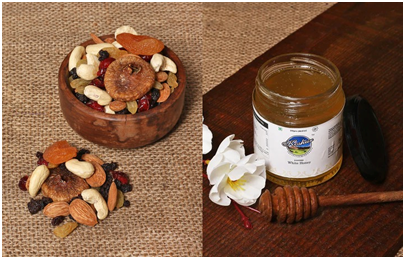
Conclusion: Embrace the Essence of Kashmiri Heritage with Kashmir Box
To sum up, Kashmir Box serves as a doorway into the fascinating realm of Kashmiri tradition and artistry. Kashmir Box welcomes you to explore the diverse array of traditional goods, from apparel to delectable food and allows you to immerse yourself in the rich cultural fabric of Kashmir. Whether you're dressing up in embroidered clothing or savoring the aromas of Kashmiri Kahwa, every piece that Kashmir Box has chosen captures the enduring charm of the Kashmir Valley. With Kashmir Box, experience the wonder of Kashmiri workmanship and go on a voyage of grace, genuineness, and unmatched beauty.
#kashmiri pheran#kaftan top#embroidered silk suits#embroidered sarees#kashmiri kahwa#Shilajit#original honey#dryfruits#Saffron#embroidered kurtis
0 notes
Text
#embroidered kurtis#embroidered silk suits#himalaya shilajit#original honey#kashmiri pheran#kaftan top#Saffron#dried fruits#embroidered sarees#kashmiri kahwa
0 notes
Text
The Phoenix Velvet Phiran is a luxurious Kashmiri outfit, crafted from rich velvet with intricate embroidery. The Kashmiri Phiran, a traditional winter attire, offers warmth and elegance, often adorned with beautiful designs reflecting Kashmir’s rich cultural heritage.
Shop Now:- https://www.luxuriesofkashmir.com/products/phoenix-velvet-phiran
0 notes
Text
Buy Kashmiri Jackets & Kaftans Online – Authentic Kashmiri Clothes & Accessories
Discover the elegance of Kashmiri craftsmanship with our exquisite collection of Kashmiri Jackets and Kashmiri Kaftans online at Kashmkari. Explore the finest Tilla Pheran, Kashmiri Aari Work Sarees, and beautifully embroidered Kashmiri Clothes ,Buy Kashmiri Jackets online that showcase timeless artistry. Elevate your style with intricately designed Kashmiri Tilla Work Pherans, embroidered purses, and Kashmiri Bags for Women. Whether you’re looking for the latest Kashmiri Tilla designs or elegant Kashmiri Embroidery Bags, we bring you premium, handcrafted pieces that capture the essence of Kashmir���s rich heritage. Shop now for authentic Kashmir Clothes and luxurious embroidered accessories!
#Buy Kashmiri Jackets online#kashmiri aari work saree#kashmiri clothes#kashmiri bags for women#latest kashmiri tilla designs#kashmiri embroidery bags#kashmiri tilla work pheran#embroidered bags#kashmir clothes
0 notes
Note
hi please feel free to ignore this ask! im just not sure who else to ask and google isnt being very helpful. i want to know if its ethical as tourists to visit kashmir?
I believe it’s complicated. I’ll preface this by saying I’ve actually been a tourist in Kashmir (and it was wonderful, but, not relevant). there are a hundred ways to “be��� a tourist in Kashmir; the fact of the matter is you could spend almost a month in the state without giving a single rupee to locals because Hindutva orgs and states have set up alternative food and residential apparatuses that makes “touring” Kashmir completely removed from Kashmiris, especially for Amarnath pilgrims. You will not eat or stay at Kashmiri owned establishments. You will not buy handicrafts made by Kashmiris. You will only benefit corporate and state apparatuses working on displacing Kashmiris materially culturally.
However, if you visit Kashmir and make a point to patronise Kashmiri owned establishments (who do need tourism money) and buy Kashmiri products and avoid giving money to the saffronised and state owned orgs, I believe it’s ethical. I’d recommend not going to Amarnath. Don’t haggle at handicrafts shops, with drivers, guides, shikara sailors etc. Take a note of the massive military presence there. Eat at a local restaurant and not to sarvanna bhavan and certainly not at one of the Amarnath camps set up by the government, etc. save up money to buy shawls and stoles and pherans.
ALSO GIVE FIVE STARS TO PLACES YOU VISIT bcs sanghis literally review bomb Kashmiri owned restaurants and shit.
#asks#anonymous#Kashmir#I loved Kashmir so much I spent hours and hours just walking in srinagar#anyway tip heavily#look up that where u go is owned by locals#stop at le delice I loved it
16 notes
·
View notes
Text
Kashmiri Online Store | Shopping In Kashmir
When you think of Kashmir, images of snow-clad mountains, pristine lakes, and lush valleys might come to mind. But beyond its scenic beauty, Kashmir is also a land rich in tradition, craftsmanship, and culture — all of which are beautifully expressed through its handicrafts, textiles, and specialty products. Today, thanks to digital platforms, you don’t have to travel to Srinagar or Pahalgam to experience the artistry of this region. A reliable Kashmiri Online Store brings the valley’s treasures right to your doorstep.
In this blog, we’ll explore what makes Shopping in Kashmir special, what you can find in a good Kashmiri online store, and why it’s worth investing in authentic Kashmiri products.

Why Shopping in Kashmir is a Unique Experience
Kashmir has a centuries-old tradition of craftsmanship, passed down through generations of artisans. From handwoven Pashmina shawls and intricately carved walnut wood furniture to spice-laden teas and hand-knotted carpets, the region’s products reflect an unmatched commitment to quality and authenticity.
When you shop from a trusted Kashmiri source — whether in the bustling markets of Srinagar or through a Kashmiri Online Store — you’re not just buying a product, you’re supporting age-old traditions and skilled local artisans.
What You Can Find at a Kashmiri Online Store
A well-curated Kashmiri Online Store brings together the best of Kashmir’s offerings across various categories. Here’s a look at some of the most popular product ranges:
1. Pashmina Shawls and Stoles
One of the most iconic products from Kashmir, genuine Pashmina is lightweight, warm, and luxuriously soft. Traditional handwoven Pashmina shawls often feature delicate Sozni or Tilla embroidery.
2. Kashmiri Clothing
From embroidered pherans (traditional Kashmiri gowns) to woolen coats and suits, Kashmiri fashion items are known for their elegance and functionality. You’ll find winter-friendly woolen wear and beautifully designed casual outfits for every season.
3. Handicrafts and Home Décor
Kashmir’s artisans excel in creating hand-carved walnut wood furniture, papier-mâché artifacts, and copperware. These products not only beautify your home but also tell a story of cultural heritage.
4. Kashmiri Saffron and Dry Fruits
Kashmir is famous for producing the world’s finest saffron, along with premium quality dry fruits like almonds, walnuts, and dried apricots. Shopping online makes it easier to access fresh, authentic, farm-sourced products.
5. Handmade Carpets and Rugs
Kashmiri carpets are globally renowned for their intricate patterns and exceptional craftsmanship. These hand-knotted masterpieces, often made from wool or silk, are a lifetime investment.
The Advantages of Shopping from a Kashmiri Online Store
1. Access to Authentic, Curated Products
Reputable online stores ensure that the products you buy are authentic and sourced directly from Kashmiri artisans and producers.
2. Convenience and Home Delivery
No matter where you’re located, a reliable Kashmiri online store ensures you can shop with ease and receive your chosen items at your doorstep.
3. Supporting Local Artisans
Every time you make a purchase from a Kashmiri store — whether online or offline — you directly contribute to the livelihood of skilled craftsmen and help preserve centuries-old art forms.
4. Safe, Secure Transactions
Modern online platforms offer safe payment gateways, customer support, and easy returns, making the shopping experience smooth and trustworthy.
Why Choose Shopping in Kashmir for Your Online Shopping Needs?
At Shopping in Kashmir, our mission is to bring the finest Kashmiri products to customers across India and the world. We handpick every item listed on our store, ensuring each product reflects the quality, tradition, and beauty Kashmir is known for.
Our Key Offerings Include:
Authentic Pashmina shawls, stoles, and scarves
Hand-embroidered pherans, suits, and woolen wear
Premium Kashmiri saffron, honey, and dry fruits
Beautifully crafted walnut wood home décor and artifacts
Hand-knotted wool and silk carpets
Every item is sourced ethically and directly from Kashmir’s skilled artisans, ensuring quality and fair pricing.
Tips for a Great Kashmiri Online Shopping Experience
Always check product certifications for Pashmina and saffron to verify authenticity.
Read customer reviews to understand the product quality and service.
Look for detailed product descriptions and care instructions before purchasing.
Choose stores that offer return policies and customer support for a risk-free shopping experience.
Conclusion
Shopping in Kashmir offers much more than retail therapy — it’s an experience that connects you with the culture, heritage, and craftsmanship of one of India’s most beautiful regions. Whether you’re updating your wardrobe, decorating your home, or picking out a thoughtful gift, an authentic Kashmiri Online Store like Shopping in Kashmir ensures you find the highest quality products while supporting local artisans and keeping traditional crafts alive.
0 notes
Text
A Winter Wardrobe Essential: Warm and Elegant Kashmiri Dress for Women
As winter wraps the world in a chilly embrace, fashion becomes more than just a style statement—it becomes a source of comfort. Enter the timeless charm of Kashmiri fashion, where warmth meets elegance. If you're looking to upgrade your winter collection, there's nothing quite like a winter wardrobe essential: warm and elegant Kashmiri dress for women.
Why Kashmiri Dresses Are a Winter Must-Have
Kashmir is not only famous for its breathtaking landscapes but also for its rich textile heritage. From handwoven pashmina to delicately embroidered pherans, every Kashmiri piece tells a story of tradition, artistry, and craftsmanship. Here's why a Kashmiri dress deserves a place in every winter wardrobe:
🌸 Luxurious Warmth
The beauty of Kashmiri attire lies in its ability to keep you warm without compromising on elegance. Whether it’s a woolen kurta or a pashmina pheran, these outfits offer cozy insulation against the cold while maintaining a graceful silhouette.
🌸 Elegant Embroidery
Each Kashmiri dress is a work of art. With intricate sozni, tilla, and aari embroidery, these pieces are designed to stand out. They add a regal charm to your look—ideal for festive gatherings or cozy evening dinners.
🌸 Versatility in Styling
A winter wardrobe essential: warm and elegant Kashmiri dress for women is incredibly versatile. Pair a long embroidered pheran with leggings and boots, or style a pashmina kurta with a delicate shawl—each outfit easily transitions from day to night.
How to Style Your Kashmiri Dress This Winter
✨ Layer It Right – Add a chic woolen shawl or a Kashmiri embroidered stole for extra warmth and flair. ✨ Accessorize Smartly – Silver or antique jewelry complements the ethnic elegance of Kashmiri outfits. ✨ Keep It Foot-Friendly – Wear your Kashmiri dress with ankle boots or ethnic juttis to balance tradition and modernity.
Where to Find the Best Kashmiri Winter Wear
With online shopping making regional wear more accessible, you can now explore authentic Kashmiri dresses for women from the comfort of your home. Look for handcrafted labels that source directly from Kashmiri artisans to ensure quality and authenticity.
Final Thoughts
If you’re building your winter closet, don’t miss out on a winter wardrobe essential: warm and elegant Kashmiri dress for women. These timeless pieces not only offer protection against the cold but also elevate your seasonal style with their graceful, traditional appeal.
0 notes
Text
Wonderful Kashmir Package
Overview
Experience Kashmir Like Never Before.
Tired of the usual tourist spots? Here’s a unique Kashmir experience just for you by Srinagar Package
Stay in a traditional houseboat on Dal Lake & wake up to floating markets Hike to hidden meadows like Doodhpathri & Yusmarg – untouched beauty! Savor authentic Wazwan cuisine with local chefs
Live the Kashmiri culture—wear a Pheran, sip Kahwa & visit artisan villages
Exclusive: Personalized itineraries & local homestays! DM us to plan your dream Kashmir trip.
Itinerary
DAY 1 : Arrive at Srinagar (Height 1,585 m) Welcome to the magical Srinagar! Our representative will meet you at the airport to escort you to the houseboat. Check-in at the houseboat. Relax and refresh! Post this, walk out to take a look at the city. You can also walk on Boulevard Road offering views of Zabarwan Mountain Ranges. Now we will take you for a delightful Shikara Ride on Dal Lake (1-hour ride). After this, if time allows, go shopping in Srinagar and collect some amazing souvenirs like pashmina shawls, saffron, walnut wood items, embroidered sari, etc. As the day draws closer, come back to the houseboat and enjoy a great night on it.
Day 02. In Srinagar | Day Excursion to Sonmarg (80 kms / approx. 2 hour drive) Full day excursion to Sonamarg (Meadow of Gold) the distance of about 83 kms will be covered in 2-1/2 hrs. Sonamarg lies in Sindh valley stream with flowers and surrounded by mountains. Sonamarg is also the base for some interesting treks to the high altitude of Himalayan lakes. Enjoy horse riding up to Thajwas glacier and sledge riding on snow. Late afternoon drive back to Srinagar.
Day 3 Gulmarg - Srinagar Full Day return excursion to Gulmarg, called as “Meadow of Flowers” Gulmarg is 53 Kms from Srinagar at an altitude of 8700-ft. Gulmarg also referred as Meadow of Flowers is a famous Ski Resort & the world’s highest 18 hole Golf Course. The place was prominent during the British time. Enjoy the scenic view of Kongdori on a Cable Car Ride – OPTIONAL (Gondola) Return to Srinagar for a Dinner & Overnight at the Hotel.
Day 4: Travel to Pahalgam Scenic Drive: Travel to the picturesque town of Pahalgam, where lush greenery meets crystal-clear rivers.
Betaab Valley Visit: Visit the famous Betaab Valley, where Bollywood classics were filmed, and immerse yourself in the breathtaking scenery. Overnight Stay: Spend the night in Pahalgam, surrounded by the tranquility of nature.
Day 5: Departure After breakfast, pack your bags & check out from the hotel. We will drive to the airport for your flight home.
Inclusions
Economy Class Return Airfare (Amritsar - Srinagar - Amritsar)
4 Nights Accommodation (on twin sharing basis)
4 Buffet Breakfast (Kindly check the Timings & Venue from the Hotel)
Sightseeing tours (as mentioned in the itinerary)
Airport transfers
All tours & transfers by Non AC Vehicle on Seat in Coach (Shared) basis
All presently applicable Hot
Airline taxes Should there be any further levy of Govt. / statutory taxes or charges, the same shall be chargeable extra as and when applicable
Exclusions
Entrance Fee, Camera Fee, Guide charges, etc. to be Paid directly by the Guest during sightseeing
Items of personal nature like laundry, telephone calls, room service charges, soft drinks and hard drink charges, etc.
Any Service not mentioned in Inclusions The payments for additional services taken at the hotel are to be settled directly at the hotel Any expenses incurred due to Medical emergencies, Cancellation of flights, Changes in flight timings, unexpected lockdown, Natural calamity, Civil unrest, etc.
Surcharges Extra (if applicable) on Long Weekends & Holidays
Discover a side of Kashmir beyond the usual tourist trails! Stay in a traditional houseboat on Dal Lake, waking up to the sight of floating markets and misty waters. Hike through hidden meadows like Doodhpathri and Yusmarg, where nature remains untouched and breathtaking. Indulge in the rich flavors of authentic cuisine, prepared by local chefs for an unforgettable culinary journey. Immerse yourself in Kashmiri culture—wear a Pheran, sip aromatic Kahwa, and explore artisan villages where skilled craftsmen bring centuries-old traditions to life.
For a truly unique experience, we offer personalized itineraries, local homestays, and offbeat adventures curated just for you. DM us now to plan your dream Kashmir getaway.
0 notes
Text
The Timeless Elegance of Kashmiri Rugs: A Legacy of Handwoven Art
Kashmir is not just famous for its breathtaking landscapes and rich culture but also for its exquisite handcrafted rugs and carpets. Each Kashmiri rug is a masterpiece, carrying centuries-old traditions of weaving, intricate patterns, and natural dyes.
Handwoven by skilled artisans, these luxury rugs bring warmth, elegance, and cultural richness to any space. Whether used in a modern home or a heritage interior, a Kashmiri rug adds a touch of sophistication like no other.
At Hamiast, we take pride in bringing you authentic Kashmiri rugs and handcrafted wall hangings, directly from the finest artisans in the valley.
What Makes Kashmiri Rugs Unique?
1️⃣ Hand-Knotted Perfection
Unlike machine-made carpets, Kashmiri rugs are 100% handwoven, a process that can take months or even years depending on size and complexity. Each knot is carefully tied, ensuring durability and unmatched precision.
2️⃣ Made from the Finest Wool & Silk
These rugs are crafted using the best quality wool, silk, or a blend of both, making them soft, luxurious, and long-lasting. The natural sheen of mulberry silk and hand-spun wool adds an unparalleled glow to every design.
3️⃣ Eco-Friendly Natural Dyes
Kashmiri rugs are colored using organic, plant-based dyes, which ensure that the colors remain vibrant for decades without fading. These natural dyes also make the carpets safer for homes with children and pets.
4️⃣ Traditional Mughal & Floral Motifs
Inspired by Mughal and Kashmiri heritage, the designs often include: ✔ Intricate floral patterns ✔ Paisley and chinar leaf motifs ✔ Geometric and nature-inspired designs
These patterns not only reflect the beauty of Kashmir’s landscapes but also its deep cultural heritage.
🔗 Explore Handwoven Kashmiri Rugs → Shop Now
Types of Kashmiri Rugs
1️⃣ Wool Rugs
Handwoven from pure Kashmiri wool, these rugs are soft, warm, and perfect for cozy interiors. They are ideal for living rooms, bedrooms, and study areas, adding comfort and sophistication.
2️⃣ Silk Rugs
For those looking for luxury and elegance, Kashmiri silk carpets are the perfect choice. Their delicate shine, fine detailing, and smooth texture make them the centerpiece of any space.
3️⃣ Wool & Silk Blend Rugs
A mix of wool and silk, these rugs provide the best of both worlds—the durability of wool and the shimmering beauty of silk.
4️⃣ Namda Rugs
These are felted wool rugs, lighter yet warm, making them a popular choice for traditional Kashmiri homes. Their vibrant colors and intricate embroidery make them stand out.
📌 Find the perfect rug for your home → Browse the Collection
How Are Kashmiri Rugs Made?
1️⃣ Wool or silk is carefully hand-spun and prepared 2️⃣ The design is first drawn on paper (Taleem) 3️⃣ Weaving begins on a handloom, one knot at a time 4️⃣ Rugs are carefully washed and finished
It takes anywhere from 6 months to 2 years to make a single large rug—truly a labor of love and patience!
Why Choose a Kashmiri Rug?
✔ Adds luxury and warmth to any home ✔ Made with 100% natural fibers and dyes ✔ A long-term investment—these rugs last for generations ✔ Supports traditional artisans and local craftsmanship
Whether you are decorating a minimalist modern home or a heritage-style interior, a handwoven Kashmiri rug is a timeless investment.
📌 Own a piece of Kashmir’s artistic heritage → Shop Authentic Kashmiri Rugs
Looking for More Kashmiri Handcrafted Treasures?
If you love Kashmiri craftsmanship, check out these premium handmade products:
🛍️ Kashmir Luxe → Luxury handicrafts, shawls, and lifestyle products. 🧥 Kashmir Ipheran → Traditional handcrafted Kashmiri Pherans & woolen wear.
#KashmiriRugs#HandwovenRugs#LuxuryCarpets#HomeDecor#InteriorDesign#ArtisanMade#SustainableHome#IndianCraftsmanship#HandmadeRugs#LuxuryLiving#EthicalShopping#WoolRugs#SilkCarpets#Hamiast#KashmirLuxe#KashmirIpheran#KashmiriArt#TraditionalWeaving#EcoFriendlyHome#CulturalHeritage
0 notes
Text
How the 2024 Indian Beauty Pageant Honors Cultural Diversity
The Indian Beauty Pageant 2024 is a celebration of India's amazing cultural variety as well as a stage for exhibiting elegance, talent, and beauty. With competitors from all over the nation, each contributing their own viewpoint and cultural background, the pageant transforms into a colorful exhibition of India's diverse culture. The Indian Beauty Pageant 2024 promotes togetherness and emphasizes the beauty of ethnic history, customs, and identity by embracing this variety. Let's examine the several ways that this year's pageant celebrates ethnic diversity.
1. Conventional Clothes Exhibitions
When candidates dress traditionally to represent their town or area, it's one of the most important parts of the Indian Beauty Pageant. Contestants may effectively commemorate and display their heritage in this part, which highlights the distinctive hues, textiles, and embroidery styles that characterize regional Indian fashion. Every ensemble, from elaborate sarees and lehengas to regional attire like Kashmiri pheran or Manipuri phanek, tells a unique tale and provides viewers with a stunning visual representation of India's fashion history.
2. Adopting a Multilingual Approach
There are hundreds of languages spoken in India, and each one has a unique cultural heritage. The Indian Beauty Pageant acknowledges the value of multilingual representation in 2024 and let competitors to use their native tongues in specific interviews or parts. In addition to encouraging inclusion, this method gives competitors a sense of ease and pride, enabling them to express themselves honestly. It serves as a reminder to viewers of India's linguistic variety and the significance of language in defining cultural identity.
3. Honoring Local Dance and Art Traditions
This year's pageant has performances that showcase local dance and art genres in addition to the customary catwalk. In addition to regional folk dances, contestants perform or take part in shows that showcase traditional Indian dances such as Kathak, Odissi, and Bharatanatyam. These performances invite viewers and competitors to appreciate the richness of India's cultural environment by showcasing the beauty of Indian art forms and paying homage to centuries-old customs.
4. Exhibitions of Cultural Talent
Whether via dance, music, storytelling, or painting, the talent round provides a significant platform for competitors to showcase abilities derived from their cultural background. The pageant enables a varied and vibrant representation of India's rich traditions by inviting competitors to include aspects of their cultural heritage. This round is particularly powerful since it demonstrates that beauty is not only superficial but is influenced by one's background, traditions, and interests.
5. Standards of Inclusive Beauty
The 2024 Indian Beauty Pageant is just another example of how beauty pageants are changing. In contrast to traditional ideas, this year's event has placed a heavy focus on accepting varied beauty standards. The pageant celebrates each contestant's individuality by showcasing their natural beauty, diverse body shapes, and range of skin tones. The pageant redefines beauty in a way that respects the entire gamut of Indian culture by showcasing a diverse array of looks.
6. Encouragement of Cultural Pride
The Indian Beauty Pageant 2024 promotes pride in Indian ancestry and encourages young women nationwide to embrace their heritage by honoring the ethnic backgrounds of its candidates. In addition to enhancing the candidates' feeling of self, this emphasis on cultural pride conveys to spectators a potent message: our customs and cultural values are sources of beauty, strength, and self-assurance.
7. Supporting Community-Based Social Impact Initiatives
Presenting social impact initiatives that help their local communities is encouraged for this year's candidates. Numerous initiatives that tackle topics like women's empowerment, education, environmental preservation, and rural development rely on traditional knowledge, crafts, and community customs. Through their efforts, the competitors highlight the power and wisdom present in India's different cultures and the importance of history in fostering a brighter future.
8. An International Platform for Indian Diversity
In addition to drawing attention from across the world, the pageant provides a worldwide stage for presenting India's diversity. International audiences are introduced to the depth and complexity of Indian culture through the contestants' performances, traditional dress, and cultural expressions. In addition to celebrating diversity, the 2024 Indian Beauty Pageant serves as a worldwide ambassador for it, fostering an awareness of India's cultural legacy.
Conclusion
By emphasizing ethnic diversity, the 2024 Indian Beauty Pageant has completely reinterpreted the meaning of pageantry. The pageant is a proud display of India's cultural identity, with traditional performances, bilingual portions, and regional clothing.
0 notes
Text
Experiencing the Enchantment of Snowfall in Kashmir
Nestled in the lap of the Himalayas, Kashmir is often referred to as "Paradise on Earth." With its breathtaking landscapes, pristine lakes, and majestic mountains, Kashmir offers a plethora of natural wonders. Among these, the experience of snowfall in Kashmir is truly magical. When the first flakes descend from the sky, covering the valley in a pristine white blanket, it transforms into a winter wonderland. Alongside the mesmerizing snowfall, the region is also renowned for its captivating waterfalls, which add to its enchanting allure. This article explores the beauty and allure of snowfall in Kashmir, as well as the picturesque waterfalls in Kashmir that grace this paradise.

The Magic of Snowfall in Kashmir
A Winter Wonderland
The sight of snowfall in Kashmir is nothing short of enchanting. As the snowflakes gently fall, covering the landscapes with a soft, white layer, it creates a serene and peaceful atmosphere. The region's lush green meadows, dense forests, and majestic mountains get cloaked in snow, transforming into a fairy-tale setting. Popular destinations like Gulmarg, Pahalgam, and Sonamarg turn into winter havens, attracting tourists from around the globe.
Winter Sports and Activities
Snowfall in Kashmir offers a plethora of opportunities for winter sports enthusiasts. Gulmarg, often dubbed as the "Heartland of Winter Sports in India," boasts one of the best skiing resorts in the country. With its well-groomed slopes and stunning vistas, it provides an ideal setting for skiing, snowboarding, and snowshoeing. The Gulmarg Gondola, one of the highest cable cars in the world, offers breathtaking views of the snow-covered peaks and valleys.
In addition to skiing, tourists can indulge in activities like snowboarding, sledging, and ice skating. The thrill of gliding down the snowy slopes or engaging in snowball fights creates memories that last a lifetime. For those seeking a more leisurely experience, a walk through the snow-laden pine forests or a ride on a traditional Kashmiri shikara on the frozen Dal Lake provides a serene and picturesque experience.
Snow-Clad Villages and Traditions
The quaint villages of Kashmir, with their traditional wooden houses, become even more charming under a blanket of snow. The locals, clad in their warm pherans (traditional Kashmiri cloaks), go about their daily lives amidst the snow. The vibrant markets, bustling with activity, offer a glimpse into the region's rich culture and traditions. The sight of smoke rising from chimneys and the aroma of traditional Kashmiri cuisine, like Rogan Josh and Dum Aloo, add to the warmth and hospitality of the valley.
The Allure of Waterfalls in Kashmir
A Symphony of Nature
While snowfall in Kashmir is a sight to behold, the region is also blessed with numerous waterfalls that add to its natural splendor. The sound of cascading water amidst the tranquil surroundings creates a symphony of nature, offering a soothing and rejuvenating experience. The waterfalls in Kashmir, with their crystal-clear waters and lush green surroundings, are a testament to the region's untouched beauty.

Popular Waterfalls in Kashmir
1. Aharbal Waterfall
Known as the "Niagara of Kashmir," Aharbal Waterfall is one of the most famous waterfalls in the region. Located in the Kulgam district, it is easily accessible from Srinagar. The waterfall, formed by the Veshaw River, plunges down a height of about 25 meters into a gorge, creating a spectacular sight. The lush green meadows and dense pine forests surrounding the waterfall add to its scenic beauty. Aharbal is also a popular spot for trout fishing, making it a haven for anglers.
2. Kokernag Waterfall
Kokernag Waterfall, located in the Anantnag district, is renowned for its medicinal springs and lush gardens. The waterfall is surrounded by terraced gardens and lush greenery, making it a perfect spot for picnics and leisurely walks. The crystal-clear waters of the spring are believed to have therapeutic properties, attracting visitors seeking relaxation and rejuvenation. The botanical garden near the waterfall houses a variety of exotic plants and flowers, adding to the charm of the place.
3. Verinag Waterfall
Verinag, located at the foothills of the Pir Panjal range, is famous for its spring and Mughal gardens. The Verinag Waterfall, fed by the Verinag Spring, is a sight to behold. The spring, believed to be the source of the Jhelum River, is surrounded by beautiful Mughal architecture and lush gardens. The pristine waters of the spring and the tranquility of the surroundings make Verinag a popular spot for nature lovers and history enthusiasts alike.
4. Shalimar Bagh Waterfall
Situated within the famous Shalimar Bagh in Srinagar, this waterfall is part of the grand Mughal gardens. The sound of water cascading down the steps of the garden, surrounded by blooming flowers and lush greenery, creates a serene and peaceful atmosphere. The Shalimar Bagh, built by Emperor Jahangir for his wife Noor Jahan, is a testament to the Mughal era's architectural brilliance and love for nature.
A Perfect Blend
The combination of snowfall and waterfalls in Kashmir creates a unique and magical experience. The sight of snow-covered landscapes, interspersed with gushing waterfalls, is a treat for the eyes and soul. The contrast between the serene white snow and the vibrant greenery around the waterfalls adds to the region's allure.

Exploring the Winter Wonderland
Planning Your Trip
To experience the magic of snowfall in Kashmir and the beauty of its waterfalls, it's essential to plan your trip during the winter months, from December to February. The weather during this period is cold, with temperatures often dropping below freezing, so it's crucial to pack warm clothing and gear suitable for winter sports.
Accommodation
Kashmir offers a range of accommodation options to suit every budget and preference. From luxurious resorts and hotels in Gulmarg and Pahalgam to cozy homestays and guesthouses in the villages, there are plenty of choices for a comfortable stay. Many hotels and resorts offer stunning views of the snow-covered landscapes, allowing you to enjoy the beauty of the region from the comfort of your room.
Local Cuisine
A trip to Kashmir is incomplete without savoring its delectable cuisine. Warm up with a cup of traditional Kahwa, a fragrant saffron-infused tea, or indulge in a hearty meal of Wazwan, a multi-course feast that showcases the region's culinary heritage. Don't miss out on trying Rogan Josh, a flavorful lamb curry, or Dum Aloo, a spicy potato dish that is a local favorite.
Conclusion
The experience of snowfall in Kashmir is truly magical, transforming the region into a winter wonderland that captivates the hearts of all who visit. The pristine white landscapes, thrilling winter sports, and charming snow-clad villages create an unforgettable experience. Complementing this winter magic are the enchanting waterfalls in Kashmir, which add to the region's natural beauty and tranquility.
Whether you're gliding down the snowy slopes of Gulmarg, walking through the serene pine forests of Pahalgam, or marveling at the cascading waters of Aharbal and Verinag, Kashmir offers a perfect blend of adventure, relaxation, and natural splendor. Embrace the magic of snowfall and the allure of waterfalls in Kashmir, and create memories that will last a lifetime.
0 notes
Text
Explore Authentic Kashmiri Culture with Kashmir Box's Exquisite Collection
Discover the epitome of Kashmiri craftsmanship and tradition with Kashmir Box. From intricately embroidered Kashmiri pherans to exquisite handicrafts, Kashmir Box offers a curated selection of authentic products straight from the heart of the valley. Immerse yourself in the rich cultural heritage of Kashmir and adorn your life with the essence of tradition, only at Kashmir Box.
0 notes
Text

Kashmiri clothing showcases elegance and tradition, adorned with Kashida embroidery's intricate floral designs. Crafted with silk or wool threads, this embroidery reflects Kashmir's rich heritage, enhancing garments like Pherans and shawls with timeless beauty and exceptional craftsmanship.
Visit:- https://www.luxuriesofkashmir.com/
#Kashmiri embroidery#Kashida Embroidery clothing#Kashmiri clothing#Kashmiri Kashida#Embroidery Clothing#Luxuries of Kashmir#Kashmiri Kashida Embroidery clothing#kashida embroidery
0 notes
Text
Unlocking the Charm: Your Comprehensive Guide To What To Wear In Kashmir

Nestled in the lap of the Himalayas, Kashmir is a land of unparalleled beauty, captivating landscapes, and a rich cultural tapestry. From the majestic snow-capped peaks to the serene Dal Lake, every corner of this paradise on earth exudes an aura of mystique and allure with the best guide to wear in kashmir. However, exploring Kashmir is not just about admiring its natural splendor; it's also about immersing yourself in its vibrant culture, which finds expression not only in its picturesque vistas but also in its traditional attire and delectable cuisine.
Exploring Kashmiri Cuisine: A Gastronomic Journey
Before delving into the intricacies of Kashmiri attire, let's embark on a culinary journey through the flavors of this enchanting region. Kashmiri cuisine is renowned for its rich and aromatic dishes that are a delightful amalgamation of spices, herbs, and unique cooking techniques. Influenced by the region's geographical and cultural diversity, Kashmiri cuisine offers a plethora of mouthwatering delicacies that tantalize the taste buds and leave a lasting impression.
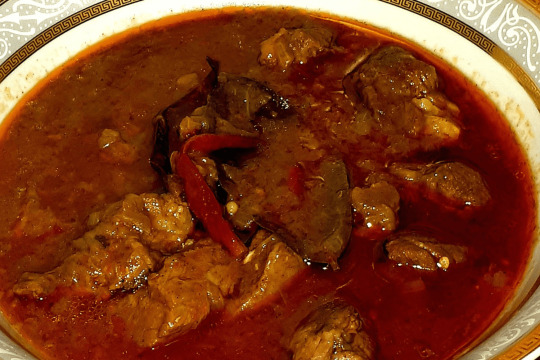
One cannot talk about Kashmiri cuisine without mentioning the iconic Rogan Josh, a sumptuous lamb dish cooked in a flavorful gravy infused with spices like fennel, ginger, and cinnamon. Another culinary gem is Yakhni, a traditional yogurt-based curry simmered to perfection with tender chunks of meat or vegetables, creating a velvety texture and a burst of flavors. For vegetarians, Dum Aloo, a dish featuring baby potatoes cooked in a rich and creamy gravy, is a must-try.
No Kashmiri feast is complete without the quintessential Wazwan, a grand culinary affair that showcases the region's culinary prowess. Consisting of multiple courses, Wazwan is a feast fit for royalty, featuring an array of dishes ranging from kebabs and curries to rice and bread. Each dish is meticulously prepared using age-old recipes passed down through generations, making Wazwan a true testament to Kashmiri culinary heritage.
Decoding Kashmiri Attire: What to Wear in the Valley
Now that we've whetted our appetite with the tantalizing flavors of Kashmiri cuisine, let's turn our attention to the sartorial aspect of this picturesque region. Kashmiri attire is a reflection of its rich cultural heritage, characterized by intricate designs, vibrant colors, and exquisite craftsmanship. Whether it's the traditional dress of the locals or the attire worn by tourists visiting the valley, each garment tells a story of tradition, identity, and elegance.
For women, the traditional Kashmiri attire consists of the phiran, a loose-fitting tunic typically made of wool or cotton, adorned with intricate embroidery known as aari work. Paired with a matching salwar or churidar and a colorful dupatta, the phiran exudes grace and sophistication while providing warmth during the chilly winters. To complete the look, women often accessorize with silver jewelry, including earrings, necklaces, and bangles, adding a touch of glamour to their ensemble.

Men, on the other hand, opt for the pheran, a long cloak-like garment that is synonymous with Kashmiri culture. Made of thick wool to withstand the harsh winter weather, the pheran is designed for both style and functionality, featuring elaborate embroidery along the edges and cuffs. Paired with loose trousers known as pajamas or churidar, the pheran exudes an aura of regality and tradition, making it a staple attire for men across the valley.
Practical Tips for Dressing in Kashmir:
While embracing the traditional attire of Kashmir adds to the cultural experience, it's essential to consider practicality and comfort, especially for travelers exploring the region. Here are some tips for dressing in Kashmir:
Layering is Key: Given the fluctuating temperatures in Kashmir, layering your clothing allows you to adjust to changing weather conditions throughout the day. Start with a thermal inner layer, followed by a sweater or fleece, and top it off with a phiran or jacket for added warmth.
Choose Breathable Fabrics: Whether you opt for traditional Kashmiri attire or modern clothing, prioritize breathable fabrics like cotton or wool to stay comfortable, especially during outdoor activities such as trekking or sightseeing.
Footwear Matters: Invest in sturdy and comfortable footwear, especially if you plan to explore the rugged terrain of Kashmir. Opt for waterproof boots with good traction to navigate uneven paths and slippery surfaces with ease.
Respect Local Customs: While Kashmir is known for its liberal outlook, it's essential to respect local customs and traditions, especially when visiting religious sites or rural areas. Dress modestly and avoid clothing that may be considered offensive or inappropriate.
Accessorize Wisely: Enhance your ensemble with traditional Kashmiri accessories such as Pashmina shawls, embroidered scarves, or handcrafted jewelry, adding a touch of elegance to your look while supporting local artisans.
Conclusion: Embracing Tradition and Flavor in the Valley of Kashmir
In conclusion, exploring Kashmir is not just about witnessing its breathtaking landscapes but also about immersing yourself in its rich cultural heritage, which finds expression in its traditional attire and delectable cuisine. Whether you're savoring the aromatic flavors of Rogan Josh or donning the elegant phiran, each experience in Kashmir is a journey of discovery, offering insights into the region's history, traditions, and way of life. So, the next time you find yourself in the Valley of Kashmir, don't just admire its beauty from afar; dive deep into its soul, one flavorful dish and elegant attire at a time.
0 notes
Text
Ishq, Inshallah
Is Kashmir getting on the South Asia’s music map?
By Faisul Yaseen
Faheem Abdullah and Rauhan Malik’s recent song ‘Ishq’ from ‘Lost; Found’ album has immortalised the work of Amir Ameer, a poet from Rahim Yar Khan, a city in the Punjab province of Pakistan.
It is breaking the internet and becoming a trending meme song. The song is also bringing closer music lovers across India and Pakistan, who are raving about Ameer’s mesmerising poetry and soothing voice of Abdullah and Malik. ‘Ishq’ may not be the best thing to have happened to the Kashmir music industry but it certainly has attracted traction and could play its part in putting Kashmir on South Asia’s music map.

Though boasting of rich musical instrumentals, magical voices, and insightful poetry, Kashmir’s music industry has suffered over the decades due to the Kashmiri language’s limited reach as only 6.8 million people speak Kashmiri. However, the experimentation of composing Urdu songs by young Kashmiri singers like Abdullah and Malik and a crop of new-generation Kashmiri singers is making the canvas bigger for them as Urdu boasts 71.29 million native speakers while the language is also understood by 571.3 million native Hindi speakers.
Like Abdullah and Malik, someone who took this experimentation to new heights in Kashmir was Yawar Abdal, a new-age Kashmiri singer who, in 2017, experimented with his single, ‘Tamana’, a multilingual song in Kashmiri, Urdu, and Persian languages based on the poetry of three legendary poets: Mehjoor (Kashmiri), Mirza Ghalib (Urdu), and Amir Khusru (Persian). The song became an instant hit on the internet. Abdal’s best work to date though might not be ‘Tamama’ but a lesser hit ‘Inshallah’. It is an artistic genius: multilayered and ambiguous and shakes a listener out of placid.

Abdal may not have the best voice among the new-age Kashmiri singers but he is heads and shoulders above others when it comes to crafting his work. Like his unconventional music, the visualisation in his music videos touches raw nerves and asks questions that only great art can.

Canadian pop artist Grimes says, “Only art ever saved me, everything else has betrayed me.” And Abdal’s music and music videos never betray your trust.

Jyotsna Bharti in ‘Mixing Old Melody with New Melancholy: Meet Kashmir’s Fresh Folksingers’ writes, “At a time when youngsters elsewhere are de-rooting themselves and trying westerns, many new-age Kashmiri musicians and singers are popularising their roots. Following the footsteps of their forefathers, they’re finding solace in Rabab, pleasures in poetries and life in mountains…”
These new-age Kashmiri singers like Ali Saifuddin, Mohammad Muneem Nazir, Saim Bhat, Ishfaq Kawa, Rasiq Khan, Waqar Khan, Kabul Bukhari, Arsalan Nizami, Ubair Taj Beigh, Baabarr, Mudacer, Shazia Bashir, Aabha Hanjura, Vibha Saraf, and Rahul Wanchoo wear Kashmir on their sleeves, sport Kashmiri shawls and Pherans, use traditional musical instruments, and shoot music videos in the picturesque locales.
They have taken a leaf out of the book of their ancestors like Raja Begum, Shamima Dev Azad, Ghulam Hassan Sofi, Abdul Rashid Hafiz, Kailash Mehra Sadhu, and Neeraja Pandit and popularised it among the new generations of Kashmir offering them music from their roots and educating them that Kashmiri music might be as rich as the Bollywood and western music and much like the Punjabi music could carve out an identity of its own.
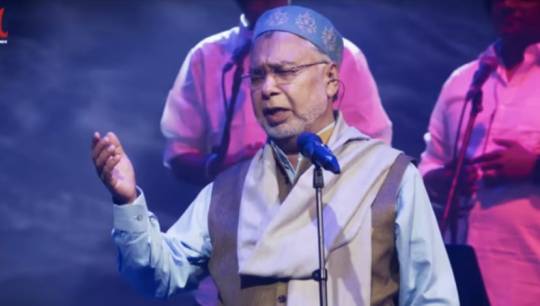
Kashmiri music represents its rich melodic heritage. It has played a significant role in shaping and expressing its cultural identity. Kashmiri music has served as a powerful tool to preserve Kashmiri traditions, values, and stories.
Kalhana in his magnum opus ‘Rajatarangini’ wrote in the 12th Century CE that Kashmiri musical instruments have extremely aged roots. A 4th-century CE tile found during excavation from Harwan shows the impression of a female musician playing a drum. The other person is shown playing a veena. King Bhiksacara (1120-21 CE), who himself played these instruments was fond of ‘Chhakri’ (folk choral singing) which continues to be popular in Kashmir.
According to Kalhana, folk musical instruments like earthen pots and brass vessels were used by Kashmiri people from very early times. Prominent musical instruments played in Kashmir include Surnai, Santoor, Saitar, Nai, Tumbaknari, Noot, and Rabab.
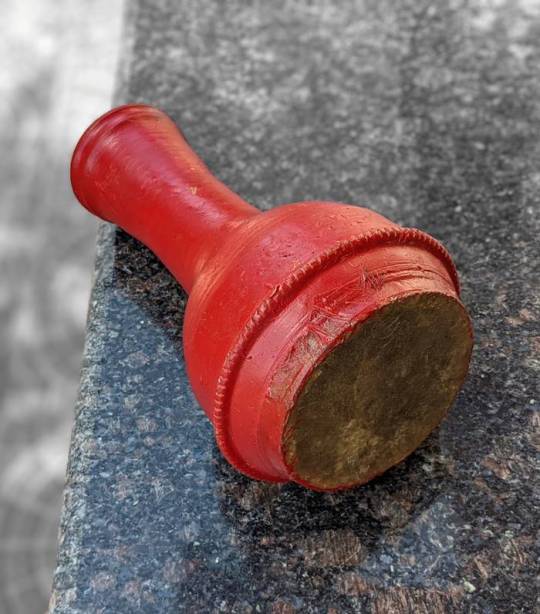
Tumkanari (goblet drum) is usually used by womenfolk on occasions like engagement and marriage functions. In Central Asia Tumkanari called Tumbakh or Tunbak is now made of wood while Kashmir maintains its originality and the musical instrument is still made of baked clay. Similarly, the use of Noet (earthen pot) in Kashmiri music is mentioned in Nilmata Purana as well as Kalhana’s Rajtarangini.
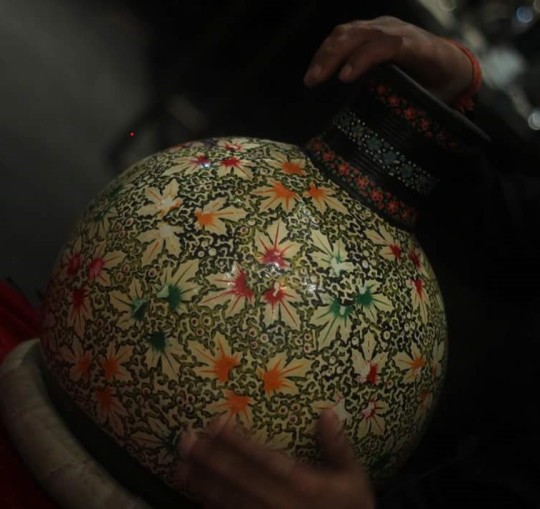
Kashmiri music also has influences from the Central Asian music.
“We even borrowed their music and instruments,” historian Prof Fida Muhammad Hassnain wrote in ‘Common Cultural Links between Kashmir and Central Asia’.
According to B C Deva, the string instruments, Rabab and Sarangi, came to Kashmir with the influence of Muslims.
While some historians state that the most popular instrument used in folk music in Kashmir is the Rabab borrowed from Persia, others suggest it was adopted from Afghanistan centuries ago and has been an integral part of Kashmiri music culture ever since.

These musical instruments have also played a key role in the evolution of Kashmiri Sufiana music.
The instruments used by the Sufiana musicians are quite different from those used in Indian classical music and Kashmiri folk music. The prominent instruments include Santoor, Kashmiri Saitar, Saaz-e-Kashmir, and Tabla.
Shabir Ahmad Mir in his paper ‘Mystical Music: Safeguarding Sufiana Mausiqi – a Vanishing Art Form of Kashmir’ for the International Journal of Intangible Heritage writes, “Sufiana mausiqi (music) continued to flourish during the reign of Sultan Yusuf Shah Chak (1579-1586). His queen, Habba Khatun, is often credited with introducing a maqam ‘Rast-Kashmiri’ by making a little structural variation on maqam Rast-Farsi. Chak and his queen were great patrons of music as well as musicians themselves, and they devoted their time to embellishing Kashmiri classical music. Rast-Kashmiri still forms the most popular maqam of the Sufiana repertory.”
In Kashmir, marriage and engagement functions, Eid festivals, Radio Kashmir Srinagar, and Doordarshan Kendra Srinagar played a key role in keeping the Kashmiri music alive.

Music often has a massive cultural impact as is illustrated by the influence of The Beatles and The Rolling Stones. The Beatles is considered as the most influential band in the history of popular music and for defining the countercultural movement of the 1960s. Similarly, The Rolling Stones, considered one of the greatest Rock n Roll bands of all time with their raw energy and rebellious image defined the cultural landscape of the 1960s and beyond.
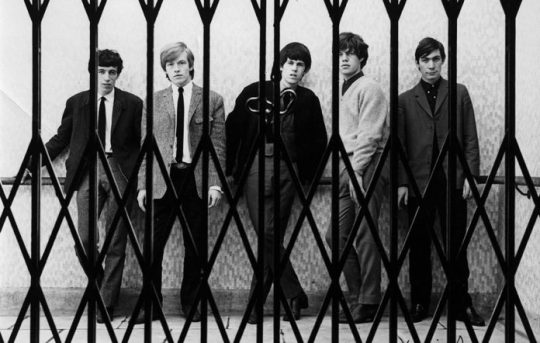
Abdullah, Malik, and Abdal may just have begun their musical journeys but the route they are taking to their stardom might shape Kashmir’s musical heritage for future generations. Who knows next ‘Coke Studio’ shift in South Asia could come from the Valley! Ishq and Inshallah might be the shape of things to come from Kashmir.
Greater Kashmir
#LostFoundAlbum#KashmiriMelodies#NewWaveKashmir#MultilingualMusic#RootsRevived#SoulfulSounds#MusicalHeritage#KashmiriArtistry#FusionFinesse#InnovativeArtistry#CulturalResonance#TraditionInTune#SufiSoul#KashmiriExpressions#MusicalExploration#PoeticRhythms#EastMeetsWest#RedefiningMusic#KashmiriIdentity#HarmonyUnveiled#KashmiriMusicRevolution#SouthAsiasNewMelody#BreakingBarriersWithMusic#IshqUnitesIndiaPakistan#InshallahForKashmirMusic#NewAgeKashmiriSingers#FromRootsToStardom#SufiyanaLegacyLivesOn#ThePowerOfRabab#CokeStudioInKashmir
0 notes
Text
Celebrate Culture in Style: Iconic Kashmiri Dress for Women
Kashmir, often called the "Paradise on Earth," is not only known for its breathtaking landscapes but also for its rich cultural heritage and timeless fashion. Among its most treasured traditions is the iconic Kashmiri dress for women, a symbol of elegance, heritage, and artistic expression. Today, as fashion evolves, women around the world are rediscovering and embracing these beautiful garments—celebrating culture in style.

The Charm of Traditional Kashmiri Attire
The Kashmiri dress for women is a perfect blend of comfort, sophistication, and intricate craftsmanship. From the graceful pheran to the regal pashmina shawl, every piece tells a story rooted in centuries-old traditions. The vibrant colors, detailed embroidery, and natural fabrics make these outfits ideal for both everyday wear and special occasions.
Pheran – A Timeless Symbol of Grace
The pheran is the heart of Kashmiri women's clothing. Originally designed to withstand harsh winters, modern pherans come in lighter materials with delicate hand embroidery—making them suitable for all seasons. With variations in fabric, length, and design, the pheran has evolved into a fashionable statement that still holds cultural significance.
Aari and Sozni Embroidery: Craftsmanship at Its Finest
One of the highlights of any iconic Kashmiri dress for women is the traditional embroidery. Aari and Sozni techniques involve fine threadwork that adds elegance to every outfit. These embroideries often feature motifs inspired by nature—like chinar leaves, lotuses, and paisleys—adding beauty and uniqueness to every garment.
Modern Fusion: Tradition Meets Trend
Today’s designers are blending Kashmiri tradition with modern fashion trends. From Kashmiri kurtas paired with palazzos to pashmina jackets worn over western dresses, the iconic Kashmiri look is being reimagined for the contemporary woman. These fusion styles are perfect for festive events, formal gatherings, or simply making a statement while staying rooted in culture.
Why You Should Celebrate Culture in Style
Wearing a Kashmiri dress for women isn’t just about looking good—it’s about embracing a legacy. It’s about supporting artisans who keep ancient crafts alive and showing the world that heritage can be fashionable. Whether it's for Eid, weddings, or everyday elegance, these dresses let you celebrate who you are with grace and pride.
Where to Shop for Authentic Kashmiri Dresses
With the convenience of online platforms, celebrating culture in style has never been easier. You can now find authentic Kashmiri dresses for women through trusted online stores that support local artisans and offer a wide variety of designs, fabrics, and custom fits.
0 notes